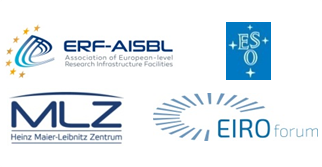Speaker
Mrs
Julie Haffner
(CERN)
Description
How does CERN use social media to make science publicly appealing? What lessons have we learned along the way?
CERN has been using social media since 2007 and evaluating our impact has become more and more important. In 2016, we co-published a paper detailing how CERN’s social media drives public engagement with particle physics and cultivates support.
We have communicated not only the latest advancements in particle physics but also showcased the people behind the science with two 2016 campaigns (#InTheory and #InPractice), profiling theoretical and experimental physicists. New social media techniques were trialled and evaluated: 360 photos and videos, portraits and quotes, Instagram grids and Instagram stories.
The European Particle Physics Communication Network (EPPCN) has also now integrated social media into its communication strategy, and CERN works closely with representatives across the network to increase visibility of worldwide particle physics research.
Analysis is an important part of managing CERN’s presence on social media, in order to know the audience and be aware of its expectations. We want to share with you our latest findings, show how they have helped us and discuss shared experience and best practices.
Primary authors
Mrs
Julie Haffner
(CERN)
Mrs
Kate Kahle
(CERN)

